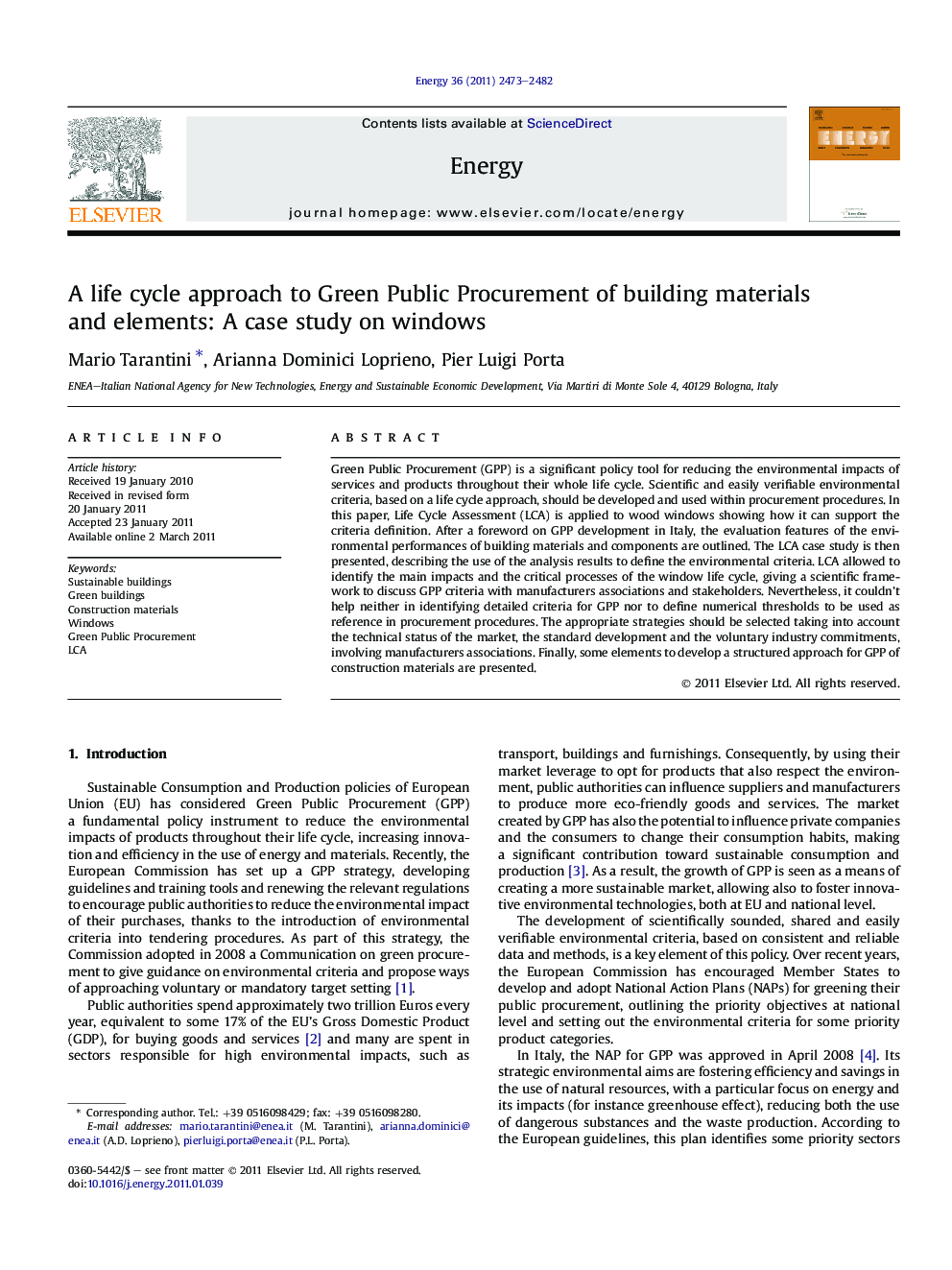| کد مقاله | کد نشریه | سال انتشار | مقاله انگلیسی | نسخه تمام متن |
|---|---|---|---|---|
| 1734477 | 1016158 | 2011 | 10 صفحه PDF | دانلود رایگان |

Green Public Procurement (GPP) is a significant policy tool for reducing the environmental impacts of services and products throughout their whole life cycle. Scientific and easily verifiable environmental criteria, based on a life cycle approach, should be developed and used within procurement procedures. In this paper, Life Cycle Assessment (LCA) is applied to wood windows showing how it can support the criteria definition. After a foreword on GPP development in Italy, the evaluation features of the environmental performances of building materials and components are outlined. The LCA case study is then presented, describing the use of the analysis results to define the environmental criteria. LCA allowed to identify the main impacts and the critical processes of the window life cycle, giving a scientific framework to discuss GPP criteria with manufacturers associations and stakeholders. Nevertheless, it couldn’t help neither in identifying detailed criteria for GPP nor to define numerical thresholds to be used as reference in procurement procedures. The appropriate strategies should be selected taking into account the technical status of the market, the standard development and the voluntary industry commitments, involving manufacturers associations. Finally, some elements to develop a structured approach for GPP of construction materials are presented.
► Major environmental impact of buildings is the operational energy to compensate for the heat losses.
► LCA can be used to support the selection of environmental criteria for GPP.
► LCA results should be integrated with market and voluntary industry commitments,
► The environmental impact of production processes cannot be neglected.
► To select the GPP criteria the involvement of industry associations is essential.
Journal: Energy - Volume 36, Issue 5, May 2011, Pages 2473–2482